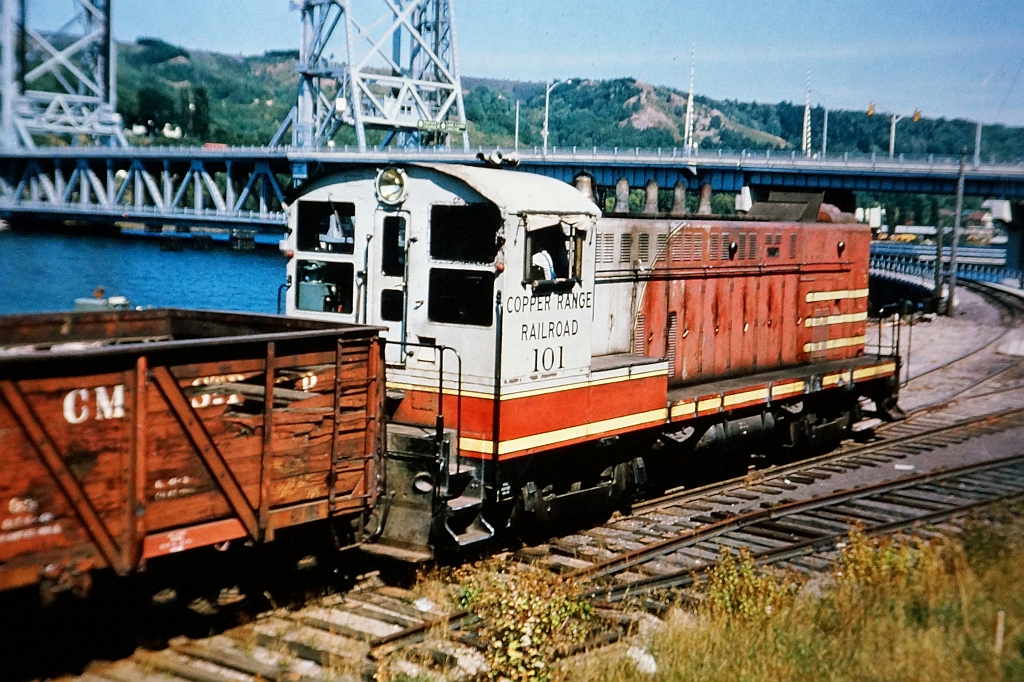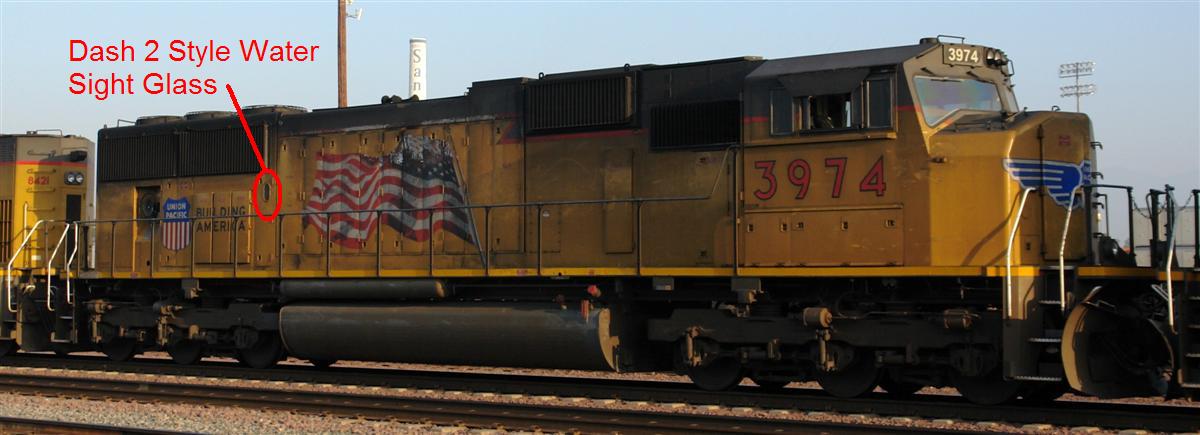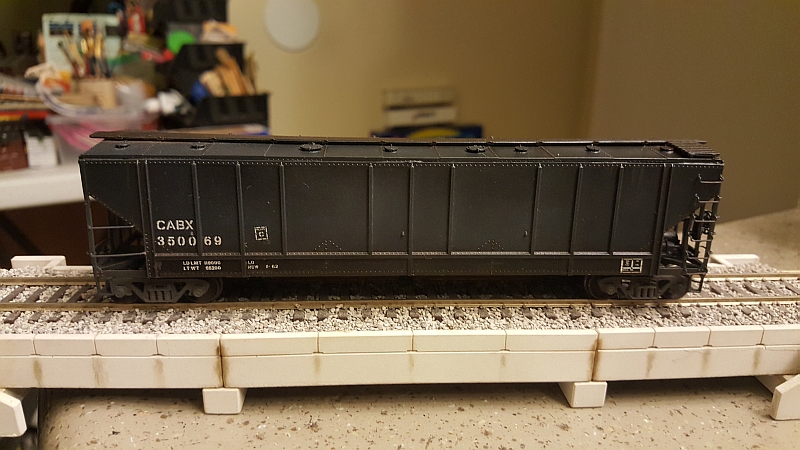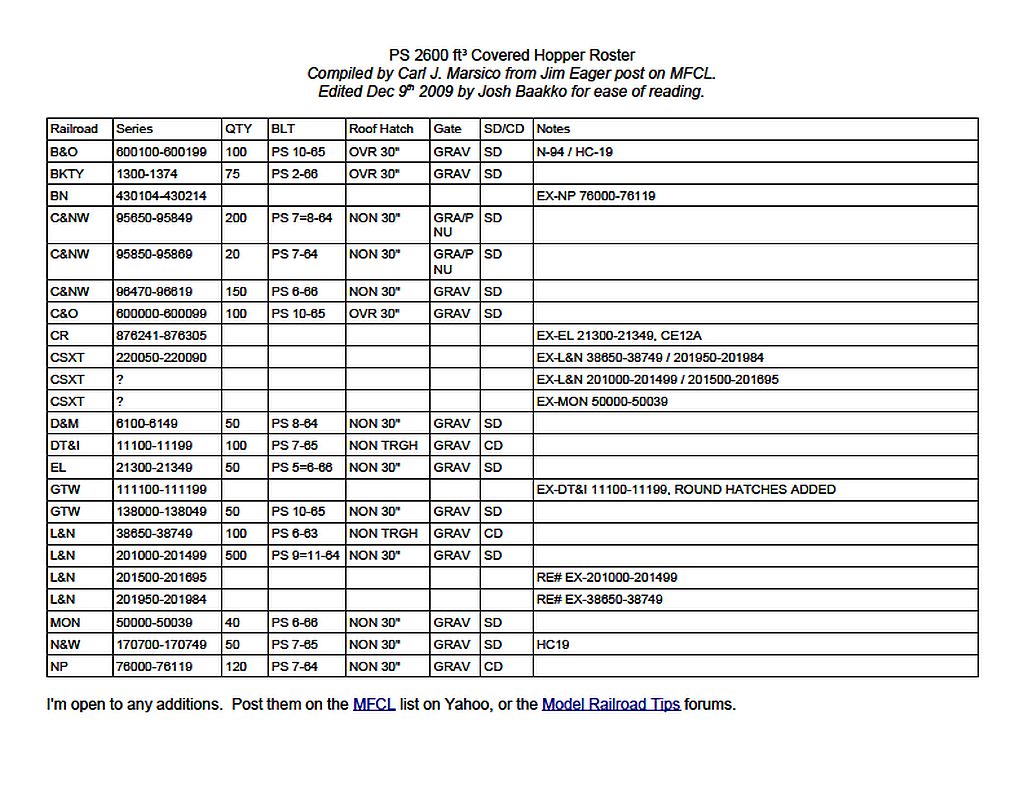- Details
- Written by Josh Baakko
- Category: Prototype Reference for Modelers
- Hits: 3385
Copper Range Diesels
Trying to collect as much info as I can into one place. Copper Range Diesel Prototype & modeling info.
Being as I grew up in Michigan, where railroads such as Mineral Range, Copper Range, Quincy & Torch Lake, DSS&A, LS&I, and later Soo Line & Wisconsin Central ran (now Canadian National), I figured I'd do some articles on them.

- Details
- Written by Josh Baakko
- Category: Prototype Reference for Modelers
- Hits: 2016
Prototypes for ExactRail Depressed Center Flats
HO Scale VS. Prototype comparison
Exactrail recently (Feb 8th 2011) released a depressed center flat in HO scale. This car is not a model of any specific prototype, however it is based upon, and very close to the Conrail FE42A.
Here's ExactRail's listing for the car. They provide a history of the GSI depressed center flats.
http://www.exactrail.com/48-depressed-center-flat-car-cr
The Conrail Historical Society has one photo online of the FE42A class:
http://thecrhs.org/Images/CR-766003-Class-FE42A
- Details
- Written by Josh Baakko
- Category: Prototype Reference for Modelers
- Hits: 2419
EMD SD70 Series Water Sight Glass
EMD fitted a few SD70 series locomotives with a water sight glass.
From the Dash 2 series locomotives up until the SD70 series, EMD was fitting all hood units with a water sight glass, on one of the radiator doors. This is a key identifying feature of Dash 2 locomotives. The SD50 and SD60 series seemed to have been the last units to do so, but I discovered a UP SD70M with a water sight glass.

- Details
- Written by Josh Baakko
- Category: Prototype Reference for Modelers
- Hits: 2785
BNSF ES44DC Variances
Not all ES44DC are created equal!
This is a guide to help place the variances in BNSF's ES44DC fleet. Note, this guide only applies to the DC version, not the AC version.
BNSF's ES44DC model fleet has just about as many changes as their Dash 9 fleet.
- 7200-7339: New Image paint. "Mid-height" rear head light mounted horizontally, low sand filler, no grabs below sand filler on rear of long hood. Front low nose door has been moved to the engineer's side. No grab irons on last engine compartment door on conductor's side of long hood, however have two grabs for roof top access immediately behind conductor's side of the cab. Fan box between exhaust & cooling grid is level with roof line, cooling grid is raised.
- 7395-7504: New Image paint. "Mid-height" rear head light mounted horizontally, low sand filler, no grabs below sand filler on rear of long hood. No grab irons on last engine compartment door on conductor's side of long hood, however have two grabs for roof top access immediately behind conductor's side of the cab. Fan box between exhaust & cooling grid is level with roof line, cooling grid is raised.
- 7505-7527: New Image paint. "Low" rear hear light mounted vertically, high sand filler accessed from roof, or a trio of grab irons mounted to the rear of the long hood. No grab irons on last engine compartment door on conductor's side of long hood, however have two grabs for roof top access immediately behind conductor's side of the cab. Raised fan box between exhaust & cooling grid.
- 7528-7604: New Image paint. "High" rear headlight, mounted vertically, low sand filler, no grabs below sand filler on rear of long hood. No grab irons on last engine compartment door on conductor's side of long hood, however have two grabs for roof top access immediately behind conductor's side of the cab. Raised fan box between exhaust & cooling grid, cooling grid is raised.
- 7605-7649, 7701, 7744-7799: New Image paint. "Low" rear hear light mounted vertically, high sand filler accessed from roof, or a trio of grab irons mounted to the rear of the long hood. Grab irons on last engine compartment door on conductor's side of long hood, and two grabs for roof top access immediately behind conductor's side of the cab. Fan box between exhaust & cooling grid is level with roof line.
- 7650-7686, 7688-7694, 7696-7700, 7702-7743: Heritage II paint. "Low" rear hear light mounted vertically, high sand filler accessed from roof, or a trio of grab irons mounted to the rear of the long hood. Grab irons on last engine compartment door on conductor's side of long hood, and two grabs for roof top access immediately behind conductor's side of the cab. Fan box between exhaust & cooling grid is level with roof line.
- 7687: Experimental New Image paint (smaller nose logo). "Low" rear hear light mounted vertically, high sand filler accessed from roof, or a trio of grab irons mounted to the rear of the long hood. Grab irons on last engine compartment door on conductor's side of long hood, and two grabs for roof top access immediately behind conductor's side of the cab. Fan box between exhaust & cooling grid is level with roof line.
- 7695: Experimental New Image paint (yellow logo). "Low" rear hear light mounted vertically, high sand filler accessed from roof, or a trio of grab irons mounted to the rear of the long hood. Grab irons on last engine compartment door on conductor's side of long hood, and two grabs for roof top access immediately behind conductor's side of the cab. Fan box between exhaust & cooling grid is level with roof line.
- Details
- Written by Josh Baakko
- Category: Prototype Reference for Modelers
- Hits: 2385
MET RP20BD drawing
HO scale drawing of an MET RP20BD
This drawing is not fully accurate, as it is missing a few small details. However it does give you a 90% complete plan for modeling the two Modesto & Empire Traction RailPower build RP20BD's.
- Details
- Written by Josh Baakko
- Category: Prototype Reference for Modelers
- Hits: 2761
Modeling 1990's - 2000's Era Amtrak Southwest Chief
A typical Modern era consist for Amtrak's Southwest Chief
For those who choose to model the Southwest Chief in the 90's of 00's, have the option to complete a full train easily in HO scale.
The prototype:
A typical train, for the 00's is pulled by 2 or 3 P42DC (AMD-103 Genesis) locomotives, and pulls one, or two baggage cars, followed by a Superliner "transition sleeper" which transfers the the end door & diaphragm height to match that of a single level car.
The train that follows is commonly 100% Superliner in make up, and consists of two sleepers, a diner, lounge, and lastly 3 coach cars.
Current paint is phase V for the P42DC's, Phase III or IVa for the baggage cars, and phase IVa or Phase IVb for the Superliners. The further you go back the more variance the will have.
Read more: Modeling 1990's - 2000's Era Amtrak Southwest Chief
- Details
- Written by Josh Baakko
- Category: Prototype Reference for Modelers
- Hits: 3256
Eastern Car Works G26 gondola Prototypes
Back in Volume 1 Issue's 2-4 (August, September, October 2010) of the Model Railroad Tips Newsletter, we explored the Eastern Car Works G26 gondola, with bulgy sides, in Conrail paint. Starting soon, we'll work on a set of Eastern Car Works 65' AAR 70 Ton mill gondola's, in Denver & Rio Grande Western paint.
We'll begin this series with a look at the railroads that rostered the 65' AAR 70 Ton mill gondola. This list is compiled from the instruction sheet for the kit.
ATSF 170850-170974
CBQ 197700-197798
CN 155000-155199
CNW 132001-132099
CS 21000-21009
DRGW 30000-30169
GN 79000-79049
LN 26000-26224
MILW 93500-93619
NYC 726000-726299
RDG 31200-31699
SOU 52000-52169
- Details
- Written by Josh Baakko
- Category: Prototype Reference for Modelers
- Hits: 2738
Carbon Black Cars
Just thought I'd throw this article up to resource some Carbon Black cars...
What is Carbon black? Well Carbon black is a left over material from industrial burning, that is basically pure carbon. It's used in tires, plastics, and much more.
Carbon black cars are fairly easy to distinguish from other covered hoppers. They generally have black paint, and usually 3 bays. The outlets are fairly distinctive, round hatches on a cone shaped bay.

- Details
- Written by Josh Baakko
- Category: Prototype Reference for Modelers
- Hits: 1962
Calculate Motive Power Needed
Simple calculations to determine the number of locomotives needed to power a train.
Basic Calculations:
| Tractive Effort: | Miles Per Hour |
| Tonnage Rating: | (2000 x % of grade)1 |
| Locomotive Total: | Tonnage Rating from above |
- Details
- Written by Josh Baakko
- Category: Prototype Reference for Modelers
- Hits: 2995
PS 2600 ft3 Covered Hopper Roster
Compiled by Carl J. Marsico from Jim Eager post on MFCL.
Edited Dec 9th 2009 by Josh Baakko for ease of reading.

Page 2 of 3

